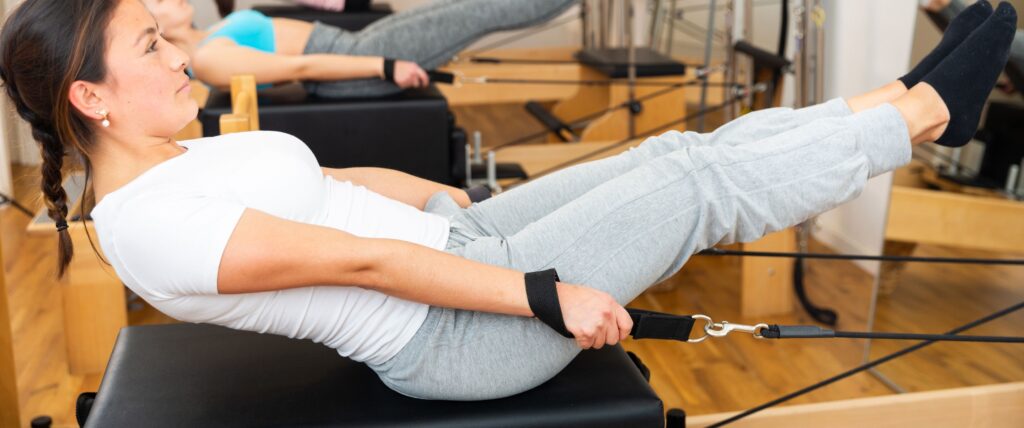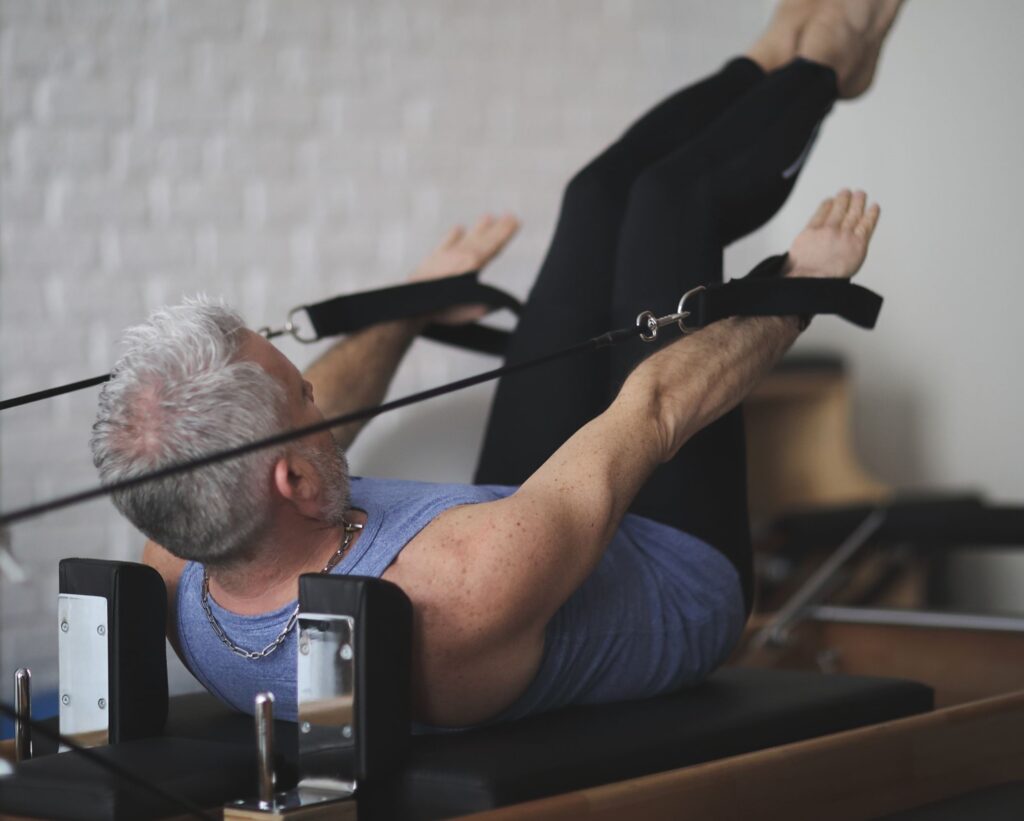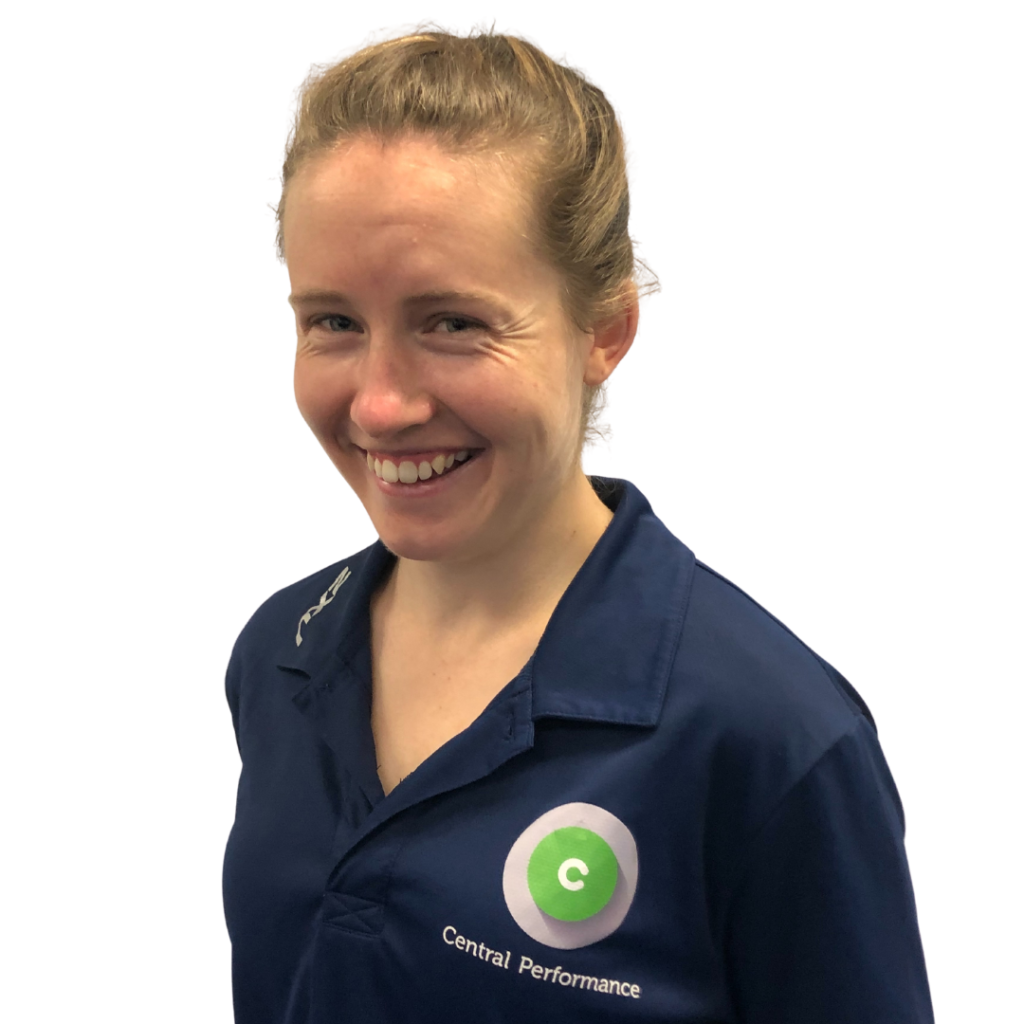
Exercise For Low Back Pain – What Does The Research Say?
Low back pain is one of the common problems seen by physios. Some cases are complex and hard to manage, but one of the most important and consistent findings from the research is that exercise is a key component of effective long-term treatment for back pain. This applies to almost all types of back pain. However, often the hard part is deciding which type of exercise is right for that particular individual.
When we look at the mountain of research on exercise for low back pain, there is no clear “right” or “best” exercise that works for the majority of people. Instead, the research generally shows that personalisation is the key factor, i.e. it’s about finding the exercise that works for YOU. While progressive weight training may be fantastic for one person, another person with similar symptoms may find that weight training aggravates their pain but swimming or Pilates really helps.
Why Do People Respond Differently To Exercise For Low Back Pain?
There are too many reasons to go into detail here as to why people have such different responses to various types of exercise for back pain, but some common factors include;
– Their particular diagnosis or pathology: there are many causes of back pain, and they can respond differently to different types of exercise
– Your exercise history: what you are used to doing and familiar with
– What are your beliefs? e.g. if you have aggravated your back pain lifting weights previously then you may believe that weight training is bad for your back or can flare your pain up
– What type of exercise do you like to do? This relates to the two points above, and can also influence how consistently and/or ongoing you will maintain your exercise routine.
Why Choose Physio (Clinical) Pilates?
There are many other reasons why people respond differently to exercise for low back pain, but the main message is that it’s best to focus on finding the type of exercise that works best for YOU. And for many people Physio Pilates, which is sometimes called Clinical Pilates, is a great option. Some reasons why people often find Physio Pilates is really helpful include;
– Physios are specifically trained and confident in working with back pain clients and prescribing exercise programs for them. When combined with Pilates training, this means they can tailor Pilates programs that are based on solid principles of back pain management to meet the needs of that particular client.
– Physio Pilates is very adaptable to meet each client’s ability at that particular time. This means their initial program can be made to be very approachable and non-threatening, and then progress in difficulty to eventually become much more challenging.
– Your physio Pilates program can be tailored so that it seamlessly follows on from your physio exercises. This means that when you “graduate” from physio you can easily progress into ongoing physio Pilates to build more strength, flexibility, and confidence to get physically active again.
– Physio Pilates uses equipment such as the reformer and wunda chair, as well as mat stations. This means there are a huge number of exercise variations that can be used, making your program interesting and fun as well as highly adaptable to suit your ability.
An Example Of Physio Pilates For Low Back Pain
A great way to see how physio Pilates can help with back pain is to look at a case study of one of our clients. Client A is a 66 year old gentlemen who initially came to physiotherapy with lower back pain in March 2022. He had been feeling increasing back pain for two months, with his main symptoms being a constant ache across his low back and glutes, plus an intermittent sharp shooting pain down both legs.
Client A’s pain was aggravated by sit to stand movements, bending to put on his socks and shoes, and moving after a period of sitting. Because of his relatively severe leg pain and worsening neurological symptoms we referred him for an MRI, which lead to him having L2-L5 decompressive laminectomy surgery in April 2022 for canal stenosis. Shortly after surgery he returned to us for post-op physiotherapy treatment to strengthen his lower back and return to doing what he wanted to do pain-free.
With physiotherapy treatment client A’s lower back became stronger and his spinal pain resolved. However, he continued to get bilateral glute and right hip flexor tightness, and consequently woke up sore to weight bear on his right hip each morning. His right hip tightness and ache would settle by the time he showered and drove to work, and he felt fine for the remainder of the day. After his initial course of physiotherapy, client A progressed to Physio Pilates to further increase his strength and work on lumbo-pelvic stability. His main goals were to reduce his morning glute and right hip stiffness, and prevent further lower back injuries.

Client A started his physio Pilates journey with an initial assessment that covered movement control, strength and flexibility, plus a thorough review of his goals and history. This allowed us to develop an individualised Pilates program to meet his specific ability, goals and injury history. He then completed four private 1:1 sessions with Sonja, one of our Pilates-qualified physios, to become fully familiar with his program and confident with his exercise technique. During these sessions we focus on providing targeted verbal and physical cues to help clients really feel which muscles each exercise is activating, and what optimal movement control feels like.
Once client A felt comfortable completing all the exercises in his program, he transitioned into group classes with a 4:1 student to teacher ratio. This small class size provided him with the supervision and attention to detail he required to confidently perform his exercise program effectively, removing the fear element of improper exercise technique and potential injury risk that a large class setting may pose for our clientele. A feature of our group class membership program is that it allows our clients to join physio Pilates classes as many times as they wish during the week, making long term health and fitness more affordable as well as social.
Client A Is Now Pain-Free, Strong And Exercising Regularly
Client A has been in our group Pilates program for 6 months now, and has made progressed immensely in his lower and upper body strength. He has returned to doing all the activities (and more) than he was doing prior to the onset of his back pain, and no longer wakes up in the morning feeling stiff and sore in his hips and lower back. His balance and endurance for walking has also improved.
One of the biggest benefits for client A is that as well as continuing with our physio Pilates program, he has also joined a local gym for the first time in years. He reports that he has been able to do this because he has gained a newfound enjoyment for exercising and that post exercise feeling, and now has the confidence to go to a public gym to do strength work knowing what he is doing and why.
The Main Reasons Client A Chose Central Performance for Physio (Clinical) Pilates
There are so many exercise options around these days that finding the right one for you can be hard. When we ask our clients why they chose our physio Pilates program to begin with, and why they continue to enjoy it, some of the common reasons they give include;
1. A Smooth Transition From Physiotherapy Treatment To Pilates Exercise
As a physiotherapy client at Central Performance there are pathways into Pilates, exercise physiology, strength and conditioning, and group fitness classes being assured that strong communication exists within the team to handover detailed information about your injury.
2. All Clients Do Their Own Personalised Program, Even In Group Classes
This is possible because our class sizes are strictly limited – maximum 4 clients per class. These small classes, along with experienced instructors, enables each client to do their own program with close supervision and technique correction in every session.
3. All Our Instructors Are Degree-Qualified Physiotherapists With Advanced Training In Clinical Pilates
Th combination of physiotherapy plus Pilates training enables our physio Pilates team to work more effectively with clients who have recently been injured or had surgery. Clients often report that they feel more confident with progressing their exercise knowing that their instructor is experienced and skilled in both physiotherapy as well as Pilates exercise.
Wondering If Physio Pilates Is Right For You?
If you are new to Pilates, or would like more information about how physio Pilates (clinical Pilates) can help you, we’d be happy to have an obligation-free chat to see if we can help. We’re always happy to discuss your individual situation and goals. You can call us on 9280 2322, or click below to contact us or book online.
Sonja Murphy, Senior Physiotherapist & Clinical Pilates Instructor

This post was brought to you by Sonja, who heads up our clinical Pilates program at Central Performance. As well as being an experienced physio, she also has advanced training in both mat and reformer/equipment Pilates. She regularly includes Pilates-based exercise into her physio treatment programs, and loves helping clients transition from rehab-focused exercise to making Pilates part of their all-round health and fitness routine into the future, just as she did with client A.
If you have any questions about our physio Pilates program please feel free to call us on 9280 2322 or click below to email us a question. If you’ve decided Pilates is something you’d like to try and are ready to get started you can also book online.

